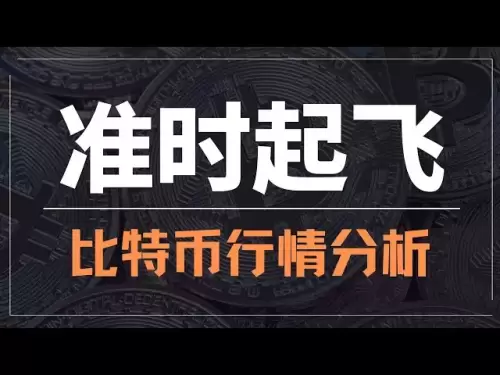-
 Bitcoin
Bitcoin $116400
0.87% -
 Ethereum
Ethereum $3819
3.86% -
 XRP
XRP $3.048
1.62% -
 Tether USDt
Tether USDt $1.000
0.03% -
 BNB
BNB $777.2
0.60% -
 Solana
Solana $169.3
0.46% -
 USDC
USDC $0.0000
0.02% -
 TRON
TRON $0.3414
2.06% -
 Dogecoin
Dogecoin $0.2126
3.33% -
 Cardano
Cardano $0.7527
1.21% -
 Hyperliquid
Hyperliquid $38.86
1.02% -
 Sui
Sui $3.683
5.27% -
 Stellar
Stellar $0.4048
1.45% -
 Chainlink
Chainlink $17.91
6.62% -
 Bitcoin Cash
Bitcoin Cash $576.9
1.29% -
 Hedera
Hedera $0.2487
1.03% -
 Ethena USDe
Ethena USDe $1.001
-0.01% -
 Avalanche
Avalanche $22.46
1.07% -
 Litecoin
Litecoin $120.8
1.69% -
 UNUS SED LEO
UNUS SED LEO $8.963
-0.30% -
 Toncoin
Toncoin $3.301
2.33% -
 Shiba Inu
Shiba Inu $0.00001250
1.13% -
 Uniswap
Uniswap $10.06
3.45% -
 Polkadot
Polkadot $3.731
1.56% -
 Dai
Dai $1.000
0.01% -
 Bitget Token
Bitget Token $4.416
1.58% -
 Cronos
Cronos $0.1482
3.73% -
 Monero
Monero $250.0
-12.34% -
 Pepe
Pepe $0.00001075
2.16% -
 Aave
Aave $274.6
4.17%
How to invest in Bitcoin? A beginner's guide
To invest in Bitcoin, set up a secure wallet, buy on a reputable exchange, and manage volatility with strategies like diversification and stop-loss orders.
Apr 11, 2025 at 12:01 pm

Investing in Bitcoin can be an exciting yet daunting prospect for beginners. As the world's first and most well-known cryptocurrency, Bitcoin has captured the attention of investors worldwide. Understanding the basics of Bitcoin and how to invest in it is crucial for anyone looking to enter the cryptocurrency market. This guide will walk you through the essential steps and considerations to help you get started with investing in Bitcoin.
What is Bitcoin?
Before diving into the investment process, it's important to understand what Bitcoin is. Bitcoin is a decentralized digital currency that operates on a blockchain, a distributed ledger that records all transactions across a network of computers. Unlike traditional currencies, Bitcoin is not issued or controlled by any central authority, such as a government or bank. Instead, it relies on a consensus mechanism to validate transactions and add them to the blockchain.
Setting Up a Bitcoin Wallet
The first step in investing in Bitcoin is to set up a Bitcoin wallet. A wallet is a software program that stores the private keys needed to access and manage your Bitcoin. There are several types of wallets available, each with its own set of features and security levels:
- Software Wallets: These are applications that you can download to your computer or smartphone. They are convenient for everyday transactions but may be less secure than other options.
- Hardware Wallets: These are physical devices that store your private keys offline, offering a higher level of security. They are ideal for storing larger amounts of Bitcoin.
- Paper Wallets: These involve printing your private keys on paper. They are considered one of the most secure methods of storing Bitcoin, as they are not connected to the internet.
- Online Wallets: These are provided by third-party services and can be accessed through a web browser. They are convenient but may pose security risks, as you are entrusting your private keys to a third party.
To set up a Bitcoin wallet, follow these steps:
- Choose a wallet type based on your security needs and convenience preferences.
- Download the wallet software or purchase a hardware wallet.
- Follow the wallet's instructions to create a new wallet address and secure your private keys.
- Make sure to back up your wallet and store the backup in a safe place.
Buying Bitcoin
Once you have a wallet set up, you can proceed to buy Bitcoin. There are several ways to acquire Bitcoin, but the most common method is through a cryptocurrency exchange. Here's how to buy Bitcoin on an exchange:
- Choose a reputable exchange: Research and select a cryptocurrency exchange that is well-established and has a good reputation for security and reliability. Some popular exchanges include Coinbase, Binance, and Kraken.
- Sign up and verify your account: Create an account on the exchange and complete the verification process, which usually involves providing personal information and proof of identity.
- Deposit funds: Fund your exchange account using a bank transfer, credit card, or other payment method accepted by the exchange.
- Place an order: Navigate to the Bitcoin trading section of the exchange and place an order to buy Bitcoin. You can choose between a market order, which buys Bitcoin at the current market price, or a limit order, which allows you to set a specific price at which you want to buy.
- Transfer Bitcoin to your wallet: Once your order is filled, transfer the Bitcoin from the exchange to your personal wallet for added security.
Understanding Bitcoin's Volatility
Bitcoin is known for its high volatility, meaning its price can fluctuate significantly over short periods. Understanding and managing this volatility is crucial for successful Bitcoin investing. Factors that can influence Bitcoin's price include market demand and supply, regulatory news, technological developments, and macroeconomic trends.
To manage the risks associated with Bitcoin's volatility, consider the following strategies:
- Diversify your portfolio: Don't put all your money into Bitcoin. Consider diversifying your investments across different cryptocurrencies and traditional assets.
- Set clear investment goals: Determine your investment horizon and risk tolerance before investing in Bitcoin. Are you looking for short-term gains or long-term growth?
- Use stop-loss orders: Some exchanges allow you to set stop-loss orders, which automatically sell your Bitcoin if its price falls to a certain level, helping to limit potential losses.
- Stay informed: Keep up with the latest news and developments in the cryptocurrency space to make informed investment decisions.
Long-Term vs. Short-Term Investing
When investing in Bitcoin, you'll need to decide whether you're in it for the long haul or looking for short-term gains. Long-term investing involves holding onto your Bitcoin for an extended period, often with the expectation that its value will increase over time. This strategy requires patience and a belief in Bitcoin's future potential.
On the other hand, short-term investing, or trading, involves buying and selling Bitcoin over shorter time frames to capitalize on price fluctuations. This approach can be more lucrative but also comes with higher risks and requires more active management.
To decide which approach is right for you, consider your investment goals, risk tolerance, and the amount of time you're willing to dedicate to managing your investments.
Security Considerations
Security is paramount when investing in Bitcoin. Protecting your investment from theft and fraud is essential. Here are some security best practices to follow:
- Use strong passwords: Choose a unique and strong password for your wallet and exchange accounts, and never reuse passwords across different platforms.
- Enable two-factor authentication (2FA): Most wallets and exchanges offer 2FA, which adds an extra layer of security by requiring a second form of verification, such as a code sent to your mobile device.
- Be wary of phishing attempts: Scammers often use phishing emails and websites to trick users into revealing their private keys or login credentials. Always double-check the URLs of websites and never click on suspicious links.
- Keep your software up to date: Regularly update your wallet software and operating system to protect against known vulnerabilities.
- Use cold storage for large amounts: If you're holding a significant amount of Bitcoin, consider using a hardware wallet or paper wallet to store your private keys offline.
Frequently Asked Questions
Q: Can I invest in Bitcoin without using a cryptocurrency exchange?
A: Yes, you can invest in Bitcoin through peer-to-peer (P2P) platforms, where you can buy Bitcoin directly from other individuals. However, using a reputable exchange is generally considered safer and more convenient for beginners.
Q: How much money do I need to start investing in Bitcoin?
A: You can start investing in Bitcoin with as little as a few dollars, depending on the exchange and the current price of Bitcoin. Many exchanges allow you to buy fractional amounts of Bitcoin, making it accessible to investors with limited funds.
Q: Is it legal to invest in Bitcoin?
A: The legality of investing in Bitcoin varies by country. In many countries, it is legal to buy, sell, and hold Bitcoin, but regulations can change. It's important to check the laws in your jurisdiction before investing.
Q: How do I know if a Bitcoin investment is a scam?
A: Be cautious of investment opportunities that promise guaranteed high returns or require you to send Bitcoin to an unknown address. Always research the legitimacy of the platform or individual offering the investment and never invest more than you can afford to lose.
Disclaimer:info@kdj.com
The information provided is not trading advice. kdj.com does not assume any responsibility for any investments made based on the information provided in this article. Cryptocurrencies are highly volatile and it is highly recommended that you invest with caution after thorough research!
If you believe that the content used on this website infringes your copyright, please contact us immediately (info@kdj.com) and we will delete it promptly.
- Pi Coin's dApp and AI Potential: Building a Decentralized Future
- 2025-08-08 02:30:12
- Bitcoin, Greenidge, and Liquidity: Navigating the Crypto Currents in NYC
- 2025-08-08 02:30:12
- Crypto Phishing Alert: $3 Million USDT Loss Highlights DeFi Risks
- 2025-08-08 01:10:12
- Crypto Presale Mania: Is Punisher Coin the High ROI King?
- 2025-08-08 01:10:12
- Online Betting, Platforms & Crypto Access: What's Hot in 2025
- 2025-08-08 00:50:12
- Layer Brett: The Meme Coin Primed for 100x Gains?
- 2025-08-08 01:50:12
Related knowledge

How to avoid common crypto investment mistakes?
Jul 13,2025 at 01:35am
Understanding the Risks of Crypto InvestmentInvesting in cryptocurrency can be highly rewarding, but it also comes with significant risks. One of the ...

What is a long-short crypto strategy?
Jul 15,2025 at 10:56am
Understanding the Basics of a Long-Short Crypto StrategyA long-short crypto strategy is an investment approach where traders simultaneously take long ...

What is a long-short crypto strategy?
Jul 11,2025 at 01:28pm
Understanding the Basics of Long-Short Crypto StrategyA long-short crypto strategy is an investment approach where traders take both long and short po...

How to use the RSI indicator for crypto?
Jul 12,2025 at 03:56pm
Understanding the RSI Indicator in Cryptocurrency TradingThe Relative Strength Index (RSI) is a momentum oscillator used to measure the speed and chan...

Is copy trading a good strategy for crypto beginners?
Jul 12,2025 at 08:28am
Understanding Copy Trading in the Cryptocurrency MarketCopy trading is a strategy where novice traders replicate the trades of experienced investors a...

How to build a crypto portfolio with $1000?
Jul 13,2025 at 08:14pm
Understanding the Basics of Cryptocurrency InvestmentBuilding a crypto portfolio with $1000 starts with understanding the fundamentals of cryptocurren...

How to avoid common crypto investment mistakes?
Jul 13,2025 at 01:35am
Understanding the Risks of Crypto InvestmentInvesting in cryptocurrency can be highly rewarding, but it also comes with significant risks. One of the ...

What is a long-short crypto strategy?
Jul 15,2025 at 10:56am
Understanding the Basics of a Long-Short Crypto StrategyA long-short crypto strategy is an investment approach where traders simultaneously take long ...

What is a long-short crypto strategy?
Jul 11,2025 at 01:28pm
Understanding the Basics of Long-Short Crypto StrategyA long-short crypto strategy is an investment approach where traders take both long and short po...

How to use the RSI indicator for crypto?
Jul 12,2025 at 03:56pm
Understanding the RSI Indicator in Cryptocurrency TradingThe Relative Strength Index (RSI) is a momentum oscillator used to measure the speed and chan...

Is copy trading a good strategy for crypto beginners?
Jul 12,2025 at 08:28am
Understanding Copy Trading in the Cryptocurrency MarketCopy trading is a strategy where novice traders replicate the trades of experienced investors a...

How to build a crypto portfolio with $1000?
Jul 13,2025 at 08:14pm
Understanding the Basics of Cryptocurrency InvestmentBuilding a crypto portfolio with $1000 starts with understanding the fundamentals of cryptocurren...
See all articles

























































































